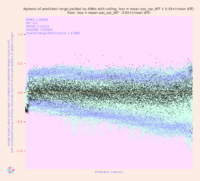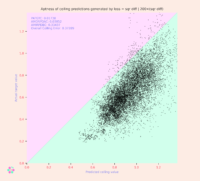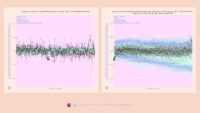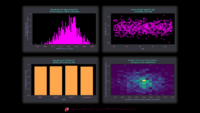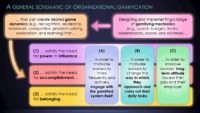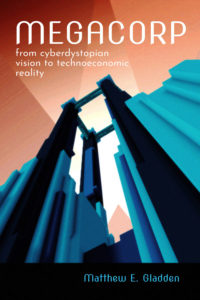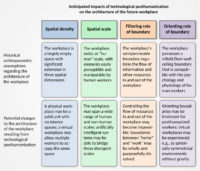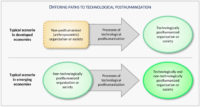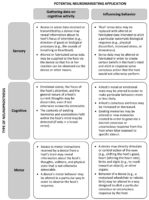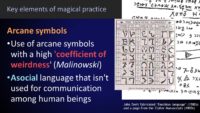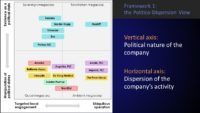
His Master’s Voice 4th Annual Symposium: Utopias, Dystopias, and Ecotopias • Facta Ficta Research Centre, Kraków • March 25, 2017
ABSTRACT: Creators of cyberpunk science fiction envision a near future in which technological, political, and economic change yield a powerful new type of organization: the megacorporation or ‘megacorp,’ which is frequently depicted as contributing to (and exploiting) the dystopian nature of its society. By analyzing such fictional works, we formulate a definition of the ‘megacorp’ along with two conceptual frameworks: (1) a model of the megacorp as cyber-physical organism; and (2) a typology that reveals the ways in which different kinds of megacorps generate dystopian or (limited) utopian dynamics within their cyber-physical ecosystems. In developing the first framework, concepts from artificial life and management cybernetics are employed to argue that some megacorps are presented as incorporating artificial agency into their organizational architecture in such ways that they do not simply act ‘like’ living organisms but indeed constitute massive synthetic life-forms that inhabit the globalized digital-physical ecosystems of the near future. In developing the second framework, it is noted that contemporary corporations typically pursue a narrow range of strategies for achieving financial profitability so they can purchase resources needed to adapt and grow. However, we contend that – as depicted in cyberpunk science fiction – dystopian megacorps have available to them a broader range of non-financial strategies that they exploit to subdue competitors and obtain the resources needed to survive, evolve, and grow.
Such strategies may employ approaches that are legal and political (e.g., extraterritoriality; corporate courts; corporate citizenship; EULAs; ownership of individuals’ genetic code, cybernetic augmentations, and output); paramilitary (deployment of private military, police, and security forces; cyberwarfare); geospatial (construction of facilities isolated in fortified, orbital, or undersea arcologies; use of ubiquitous sensors and effectors to convert the entire Internet of Things into a corporate facility; virtualization and nonlocalization of organizational architecture; construction of new digital-physical ecosystems to dominate); biological (engineering of biomedical dependencies among employees and consumers; creation of ‘walled-garden’ commercial ecosystems requiring genetic modification for entry); psychological and sociocultural (direct neurocybernetic access to a population’s sensory, cognitive, and motor activity; cultural engineering; memetic warfare); or technological and informatic (monopolization of core global ICT infrastructure; ‘megascale’ data mining, computational simulation, and prediction; automated decision-making by AI; workforce roboticization and cyborgization). Three ‘views’ for analyzing competitive strategies of a megacorp are presented, each of which utilizes two dimensions to distinguish four types of megacorps according to their interactions with their ecosystem and resulting generation of dystopian or utopian dynamics.
The framework is then applied to numerous megacorps described in cyberpunk RPGs, including Arasaka and WorldSat (from Cyberpunk 2020); Evo, NeoNET, Proteus, Renraku, Saeder-Krupp, and Shiawase (from Shadowrun); Belltower Associates, the Picus Group, Tai Yong Medical, and VersaLife (from Deus Ex); Anubis, Augustus, and Imperial (from Ex Machina); and Golden Promise (from Interface Zero).
It is hoped that such frameworks can facilitate efforts to: (1) analyze the roles that creators of cyberpunk science fiction envision for megacorps in their worlds’ ecosystems; (2) explicate how megacorps’ competitive strategies contribute to the dystopian nature of their societies; (3) anticipate new competitive strategies that may emerge if our world’s actual business ecosystems evolve to resemble those presented in cyberpunk fiction; and (4) recognize any real-world corporations that begin to acquire characteristics of (dystopian) megacorps.
Read more


